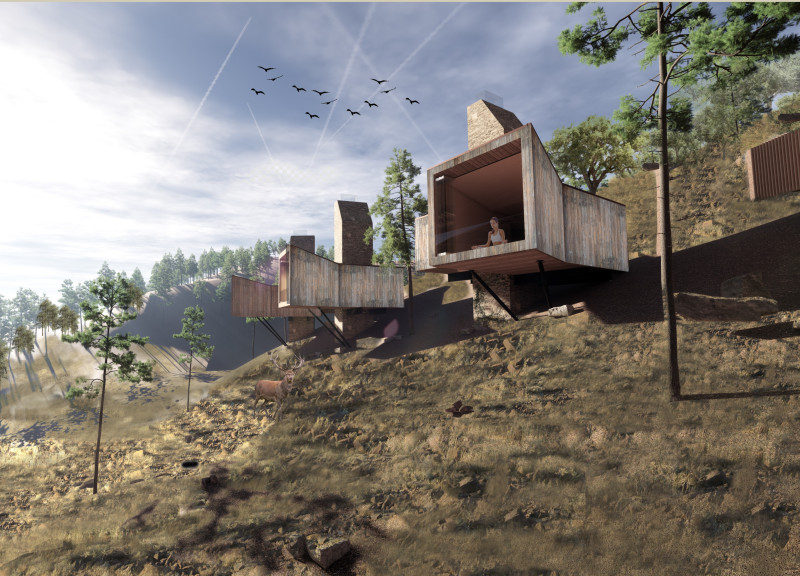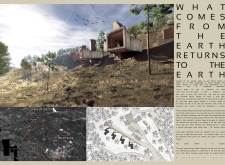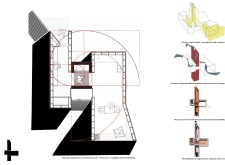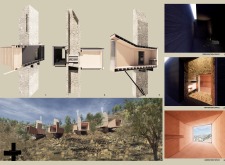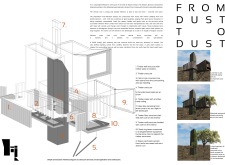5 key facts about this project
The project titled "What Comes from the Earth Returns to the Earth" is an architectural retreat located in Vale de Moses, designed to embrace sustainable living and a deep connection with the natural environment. This design highlights the thoughtful integration of natural materials and geometric forms that evoke the surrounding landscape. The architecture aims to provide a holistic living experience that fosters introspection and harmony between inhabitants and nature.
The primary function of this architectural design is to serve as a retreat that encourages relaxation and purposeful engagement with the environment. Spaces are strategically planned to facilitate ease of movement and promote a sense of tranquility. The project features multiple interconnected volumes, each tailored for specific activities such as preparation, transition, and liberation, reflecting an experiential design ethos focused on the user’s journey through the space.
Sustainable Material Selection and Construction Methods
A defining feature of this project is its meticulous choice of materials that align with ecological sustainability principles. The construction employs concrete for durability and structural integrity, complemented by timber to offer warmth and tactile engagement. Cork serves as an environmentally sound cladding option, providing insulation while remaining biodegradable. Recycled steel is incorporated in structural components, demonstrating a commitment to the responsible use of resources. Glass is utilized for windows and openings, allowing natural light to permeate interior spaces while fostering visual connections to the exterior landscape.
The geometric volume arrangement reflects the surrounding topography, creating a dialogue between the architecture and its setting. The vertical orientation of structures enhances the views and allows for natural ventilation, contributing to energy efficiency. Transitions between spaces are designed to encourage exploration and interaction with the site, reinforcing the relationship between architecture and the environment.
Innovative Space Planning and Design Element Interaction
The project employs innovative space planning strategies that cater to experiential living. The preparation area serves as an inviting entry point to the retreat, setting a welcoming tone. The transition spaces are strategically positioned to guide inhabitants through various experiences, enhancing anticipation before entering more intimate areas, which culminate in the liberation spaces that open to expansive views.
Architectural details such as strategic window placement optimize natural light and airflow, while the careful interplay of materials creates a sensory experience. The combination of concrete, timber, and cork results in spaces that are both functional and aesthetically cohesive. This thoughtful approach to design not only fulfills the architectural requirements but also promotes environmental stewardship.
For a thorough understanding of the architectural vision, details such as architectural plans, sections, and designs are essential. Exploring these elements will offer deeper insights into the innovative ideas underlying this project and its commitment to sustainability and nature.


